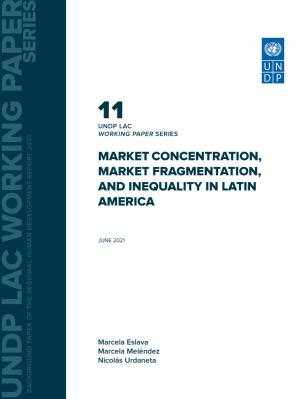Market Concentration, Market Fragmentation, and Inequality in Latin America

Market Concentration, Market Fragmentation, and Inequality in Latin America
June 15, 2021
Inequality in Latin America is much higher than in Europe and the US. The income distribution in the region is also much more skewed, displaying a thicker left tail. And, like those comparison economies, it also exhibits a long right tail. We illustrate the link between this bipolar character of inequality in the region and the similarly bipolar character of the distribution of productive units, where income is generated.
The firm size distribution in Latin America is dominated by a plethora of tiny businesses, which absorb several times more employment than in the US and Europe and exhibit a much lower relative productivity, while its upper tail exhibits higher market concentration. 34% of the distance in the 50/10 personal income gap between Latin America and the US is explained by a higher concentration of workers in the categories with poorer relative income and productivity: self-employment and employment in micro establishments. In the right tail of the income distribution, the larger 90/50 personal income gap in the region compared to the US is fully explained by the larger relative income of business owners of large firms with high relative markups.
It shows that market concentration in the region is large and tied to small labor shares. It is also closely tied to the extreme dispersion of productivity and the prevalence of low productivity businesses. The central message is that high inequality in the region is deeply rooted in the productivity problem.

 Locations
Locations




